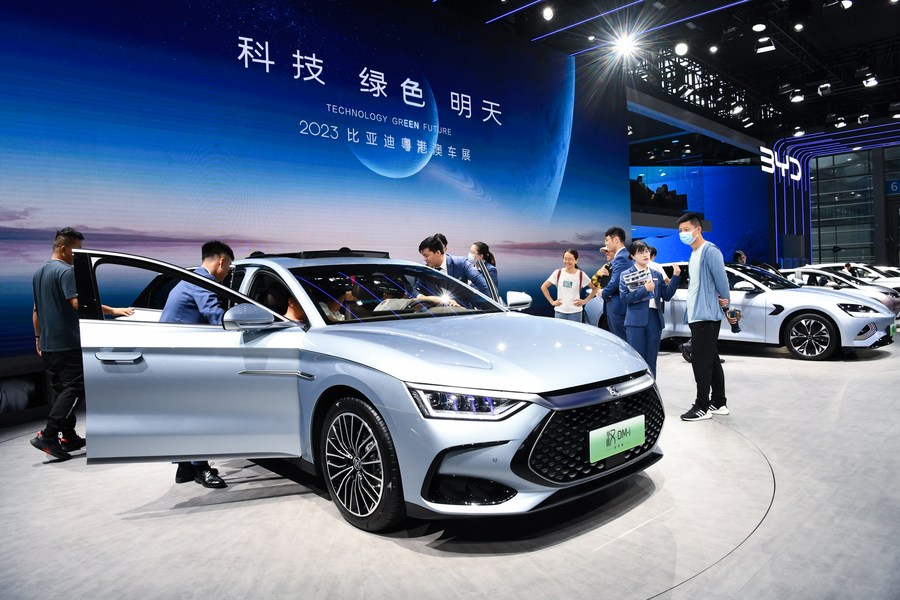
Visitors learn about new energy vehicles of Chinese carmaker BYD during the 27th Guangdong-Hong Kong-Macao Greater Bay Area International Auto Show at the Shenzhen Convention and Exhibition Center in Shenzhen, south China's Guangdong Province, June 16, 2023. (Xinhua/Liang Xu)
China's southern boomtown Shenzhen has announced plans to construct 300 new supercharging stations over the next three years, in a move to further facilitate charging for new-energy vehicles (NEVs).
The announcement was made at the International Digital Energy Expo 2023, where the city also debuted its first fully liquid-cooled supercharging demonstration station.
The proposed construction project is part of a broader initiative to establish Shenzhen as the "City of Supercharging" by 2030. The initiative aims to create as many supercharging stations as gas stations in the city by 2025.
Under optimal conditions, the liquid-cooled supercharging demonstration station, developed in partnership with the Shenzhen power supply bureau under China Southern Power Grid and Huawei Technologies, can supply enough power in just one second to travel 1 km.
This new technology provides a quieter, more stable and safer charging environment compared to traditional air-cooling methods. Furthermore, with fewer parts susceptible to wear, the equipment's lifespan can be up to 20 years longer.
The planned supercharging stations will be mainly built around high-traffic areas like airports, high-speed rail hubs, municipal parks and commercial centers, to support the growing demand for charging infrastructure.
Shenzhen is home to 24,000 new-energy and digital-energy enterprises, and boasts ownership of 860,000 NEVs. The city's penetration rate of NEVs exceeds 60 percent, noted Qin Weizhong, mayor of the city.
Shenzhen has already rolled out a plan that seeks to increase NEV ownership to 1.3 million units by 2025.

















